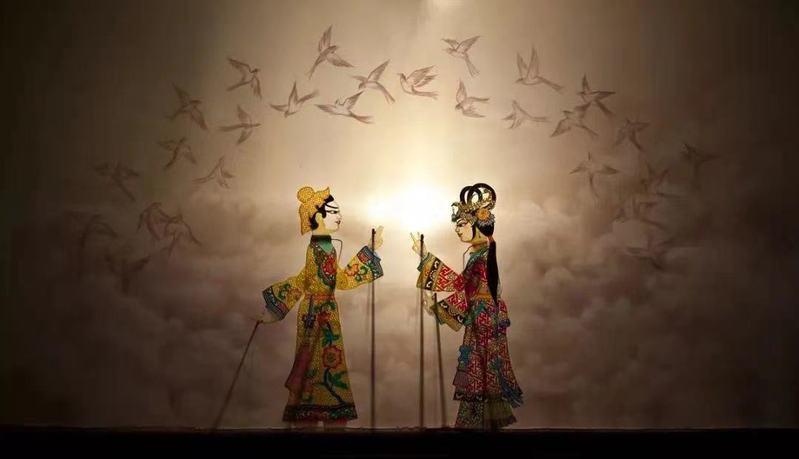
Auther:2023-08-10

Shadow play, formerly known as shadow play or lantern play, is a folk drama that uses candles or burning alcohol and other light sources to illuminate silhouettes of characters made of animal skins or cardboard to perform stories. When performing, artists behind a white curtain manipulate opera characters while singing stories in popular local tunes (sometimes in dialect), accompanied by percussion instruments and strings, with a strong vernacular atmosphere. In rural areas of Henan, Shanxi, Shaanxi and Tianshui, Gansu, this clumsy Han Chinese folk art form is very popular among people.
Shadow is a generic term for shadow puppet theater and shadow puppet characters (including scene props and scenery) products. Shadow play is a theatrical form that allows the audience to watch a flat figure perform through a white curtain to achieve artistic effects; and the flat figures and scenery in shadow play are usually leather products carved and painted by folk artists by hand, so they are called shadows. In the past, when there were no movies or TV, shadow puppets were one of the most popular folk entertainment activities.
China is a vast country, and each region has its own characteristics, but the production process of shadow is mostly the same, usually through eight processes, such as selecting the skin, making the skin, drawing, overdrawing, carving, applying color, sweating and ironing, embellishing and combining, etc., and carving by hand more than 3,000 knives, which is a complex and wonderful process. The art of shadow painting draws on the techniques and styles of Chinese silk painting, portrait stone, portrait brick and Tang and Song monastery murals from the Han Dynasty.

The production process is: first the sheepskin, donkey skin or other animal skins to remove the hair, blood, and then by drug treatment, so that the leather becomes thin, translucent, coated with tung oil, and then the artists will be a variety of characters depicted on it, with various types of knives carved chisel, and then painted with color, coloring mainly use red, yellow, green, green, black and other five kinds of pure color.
When carving, generally use Yang engraving, sometimes also use Yin engraving. The painting and dyeing pay attention to women's hair ornaments and clothes decorated with patterns such as flowers, grass, clouds and phoenixes, while men use patterns such as dragons, tigers, water and clouds as patterns. The characters are the same as those in the theater, with the roles of Sheng, Dan, Jing and Jiao complete. The shadow is as high as 55 cm and as low as 10 cm.
The limbs and head of the shadow puppet are carved separately and intertwined with threads so that they can move freely during the performance. A shadow puppet has to be manipulated with five bamboo sticks, and the artist's fingers are so flexible that he often dazzles the audience. Not only the hand kung fu is superb, the mouth has to say, read, play, sing, and brake the gong under the feet. The screen on which the shadow is played is made of a piece of white gauze of 1 square meter in size. The white gauze is polished with fish oil, and becomes stiff and shiny. When the performance, the shadow close to the screen activity, the human shadow and colorful colors really moving. Shadow props are small, easy to perform, and not limited by the venue, and the actors do not need formal training, so it is very popular among the people. In areas where shadow puppetry is popular, people affectionately call it the art of one tambourine, and world figures such as Goethe in the 18th century and later Chaplin have spoken highly of the art of Chinese shadow puppetry. It can be said that shadow puppetry is a folk art with a long history and wide circulation in China. This art form, which originated in China, has fascinated many foreign theater fans, and people affectionately call it the Chinese Shadow Light.

